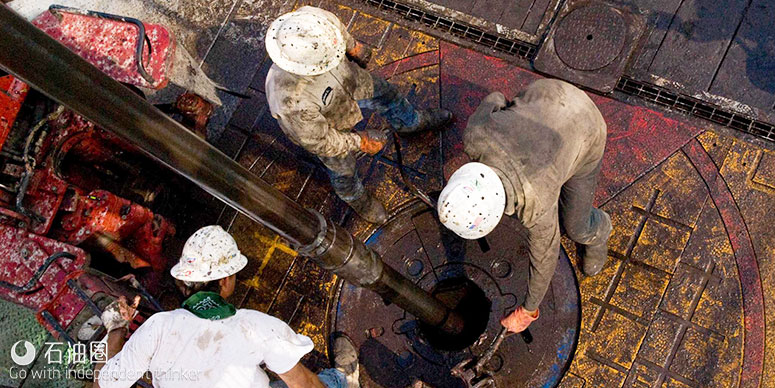Archer’s field proven Barricade system is designed to wash and clean the annulus of a perforated casing or liner in a selected formation zone or between casings, then accurately place a permanent barrier. With the addition of the one-trip TCP (Tubing Conveyed Perforation) module, the Barricade system becomes a one-trip perforate, wash and cement placement. It provides a barrier that gives safer and better wells.
Archer’s field proven Barricade is designed to wash the annulus of a perforated interval through a tubular(s) by:
▪Perforating the casing or liner.
▪Washing outside the perforated interval.
▪Placing spacer fluid in the casing and outside the perforated interval.
▪Placing barrier material in the casing and outside the perforated interval.
Evolution of Barricade
▪1st Generation Perforate and Wash Method
—First job performed for ConocoPhillips (Eldfisk A) in 2010. A three-trip system.
▪2nd Generation Perforate and Wash Method
—Performed for ConocoPhillips (Ekofisk M) in 2014. Used the dual swab cups to place the cement accurately. Evolved from a two-trip system into a one-trip system, including perforations.
▪New Heavy Duty Swab Cups
▪High Performance Swivel
Benefits
▪Single run system with perforation guns on the same run.
▪Controlled washing with standpipe pressure as performance indicator.
▪Excellent hole cleaning capabilities with high rotation (120 rpm).
▪Accurate placement of cement using the dual swab cups.
▪No need to squeeze or wait on cement (WOC). Time saving – approximately 16-24 hours.
▪Time efficient: 165 ft / 50 meter average 12 hours.
Barricade Experience
▪Deepest performed Barricade job; 3500 mMD / 11480 ft.
▪Max deviation to date; 67 deg. Single trip, washed and cemented with success.
▪Longest washed interval to date; 77 m / 250 ft (most common 50 m / 165 ft).
▪Barricade jobs performed:
1 ea 7”.
45 ea 9 5/8”.
6 ea 10 ¾”.
1 ea 11 ¾”.
8 ea 13 3/8”.
Case study: Slot recovery in the North Sea
Stronghold Barricade reduces time and provides increased efficiency on slot recovery
Challenge
A North Sea customer challenged Archer to plug and abandon a well to legislative requirements while increasing the efficiency of the process. Additionally, the challenge involved recovering the slot back to above the top of the 10” liner hanger to facilitate a new sidetrack. Traditional plug and abandonment methods are often time consuming and costly. The compound complexity of milling, debris handling, perforating and squeezing cement can, and often do, reduce the chance of success.
Solution
This customer qualified Archer’s Barricade as a method to perform the Plug & Abandonment, (P&A). The Barricade is designed to perforate selected casing or liner sections, wash and clean the perforated zone outside of the casing, then enable a permanent rock to rock cement plug—all during a single trip.
The first step of the process was to perforate, and after the guns were fired, to circulate bottoms up to handle any possible influx of gas. Once completed, washing of the annulus behind the casing started, firstly from top to bottom of the perforated interval—and by directing the flow into the annulus using swab cups Archer ensured the annular area was being fully washed and that the perforated interval was being properly cleaned. To verify the washing effectiveness, the perforated area was then washed a second time, now from bottom to top, and at a much lower pressure.
This time, the observed pressure drop verified the quality of the washing. Bottoms up was circulated again to be certain that the well was free of debris before the cement job. The Barricade method uses the swab cups again to direct the cement flow into the annulus behind the casing. The risk when squeezing cement can always be that there is limited control of where it goes, and that can result in losses when the cement takes the path of least resistance. In this case, by directing the flow of cement through the perforations into the annulus and back again—using the dual swab cups—it is always ensured that the cement enters the annulus as required when the pump and pull cement job is performed.
On this well, three P&A plugs of 50 meters/165 feet each were completed using the Barricade. During the washing sequence a flow rate of 1600 lpm/420 gpm with a circulation pressure of approximately 110 bar/1600 psi was achieved. The perforated annular area was then cemented according to Archer’s specifications which resulted in three, load and pressure tested, rock to rock P&A plugs that satisfied legislative and customer requirements.
A new application was added to the Barricade system. A new high performance swivel was used on the last plug while circulating bottoms up after the washing sequence. Rotation at 120 rpm increased the amount of debris coming over the shakers and the swivel also improved on the time needed to circulate the well clean before the cement job.
Result
The customer was impressed by the swivel’s performance, agreeing that it further optimized the Barricade system. This system delivered a well free from debris before the cement job; the swivel was considered a great success, and a new milestone was achieved for the Barricade system.
Overall, the objective of plugging and abandoning the mother wellbore was completed in just seven days. One of two barriers across the main reservoir and two barriers across a secondary reservoir were completed at a rapid pace and with positive verifications. The introduction of the new high performance swivel improved and optimized the well cleaning before the cement job and this contributed to a flawless pump and pull cement job.
This Barricade job was a great success for the customer and has provided a robust blueprint for future operations.

 石油圈
石油圈

